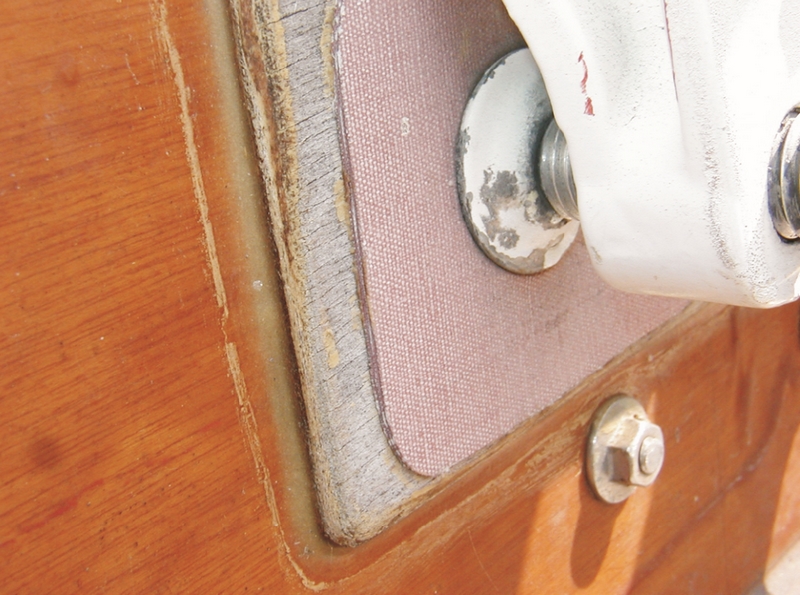
by Tom Pawlak — GBI Technical Advisor
Above: Tom’s transom saving tip is to epoxy conveyor belt material into place, protecting the transom wood from getting crushed by the motor mount screws.
Ten years ago, I replaced the plywood transom in my 16′ aluminum fishing boat. It had gone bad due to the motor mount screw pads crushing the wood from over-tightening, and from shock loads involved in hanging a motor off the back of a boat and traveling down the road at 70 mph. I wanted the transom to hold up better than the original, so I protected the screw pad area with 1 16″ thick conveyor belting that was glued in place with epoxy. I thought that if the idea worked I would share it in Epoxyworks. As you can see from the photo (above, the transom has held up well. The transom has not been touched in all that time—not even a fresh coat of varnish.
By gluing the conveyor belt over the area, I felt the screw pads were less likely to crush and abrade the wood. The rubber-based belting would also provide a tough cushy surface for the screw pads to conform to so the screws would not work themselves loose. Lastly, I did not want water to get into the wood in this area. I felt that even if the wood gets crushed a bit it under the belting, it would not deteriorate because the belting would act as a membrane keeping the water out. After ten years, I can say it worked extremely well and I feel confident recommending the technique. I don’t know how large a motor you could use with this method. However, my boat is equipped with a 25-hp long shaft motor, so the screw pads holding the motor to the transom are under considerable load while the boat is under power and while trailering down the road. Yet no identifiable damage can be found to date.
To use this method reliably, you will need to follow some simple guidelines. Locate conveyor belting that epoxy adheres well to. Most belts are made with a fabric core, and epoxy adheres nicely if the rubber is abraded until some of the fabric cord is exposed.
Make the conveyor belt pad large enough. I recommend extending the size of the pad to be at least one diameter of the screw pad wider in all directions from the edges of the screw pads. This means that if the screw pad from the motor is 1¼” in diameter the conveyor belt pad should be at least 3¾” wide and tall to give the rubber pad room to stretch under load. That way the belting stays attached under load to keep water out even if the wood beneath the screw pad is somewhat compressed.





